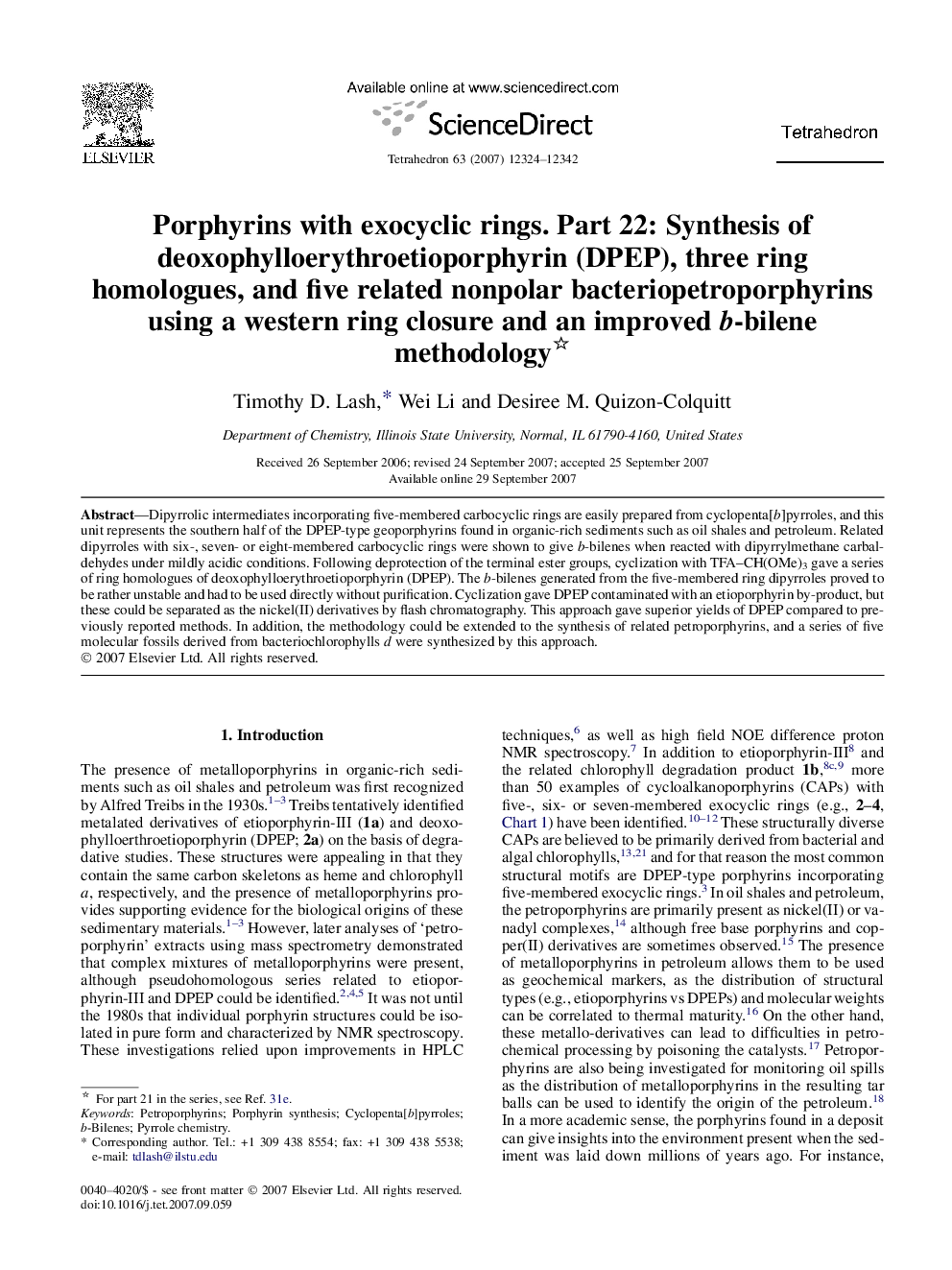| Article ID | Journal | Published Year | Pages | File Type |
|---|---|---|---|---|
| 5229786 | Tetrahedron | 2007 | 19 Pages |
Dipyrrolic intermediates incorporating five-membered carbocyclic rings are easily prepared from cyclopenta[b]pyrroles, and this unit represents the southern half of the DPEP-type geoporphyrins found in organic-rich sediments such as oil shales and petroleum. Related dipyrroles with six-, seven- or eight-membered carbocyclic rings were shown to give b-bilenes when reacted with dipyrrylmethane carbaldehydes under mildly acidic conditions. Following deprotection of the terminal ester groups, cyclization with TFA-CH(OMe)3 gave a series of ring homologues of deoxophylloerythroetioporphyrin (DPEP). The b-bilenes generated from the five-membered ring dipyrroles proved to be rather unstable and had to be used directly without purification. Cyclization gave DPEP contaminated with an etioporphyrin by-product, but these could be separated as the nickel(II) derivatives by flash chromatography. This approach gave superior yields of DPEP compared to previously reported methods. In addition, the methodology could be extended to the synthesis of related petroporphyrins, and a series of five molecular fossils derived from bacteriochlorophylls d were synthesized by this approach.
Graphical abstractDeprotection of the terminal tert-butyl ester protective groups of b-bilenes incorporating fused carbocyclic rings with TFA, followed by dilution with CH2Cl2, and cyclization with trimethyl orthoformate, provides a facile methodology for the synthesis of geochemically significant cycloalkanoporphyrins.Download full-size image
